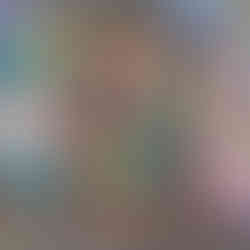Sorry, Not Sorry in Gent
- Anna Stolyarova
- Sep 5, 2022
- 2 min read
Updated: Sep 6, 2022
Earlier this year, SAMA had received an invitation from "Sorry, Not Sorry" #streetartfestival in Gent, Belgium, to be a guest speaker for the following reasons "your bottom-up operation, your vision on showing street art, street art as a means of dialogue and street art as an art form that dares to question some assumptions about artistic ownership, legality and the heritage value of the art form", wrote Albane Vangheluwe.

Sorry, Not Sorry (SNS) "literally shows street art, graffiti and other art forms on the street, in a neighbourhood on the edge of the inner city, with a focus on creative 'underground' and 'out of the box' art. SNS also focuses on connection and participation, with special attention to small initiatives, individual artists, local artistic players and neighbourhood residents to create and experience art together." More info about the festival, participating artists, activities via the link above and on our socials: https://cultuur.stad.gent/nl/activiteiten/sorry-not-sorry-straatkunstenfestival-2022
In addition to a new festival location - the Moscou-Vogelhoek-Flora district - numerous visual works, performances, activities, etc., the presentation of the book 'Concrete playground' will take place. This publication is a historical document about the Ghent Concrete Plant, which until recently was an important free space and experimental place, where many graffiti artists, from home and abroad, have placed their works. The concrete plant is no more, but the book is a lasting memory and recognition of the artists, their work and the history of the place. The festival used this book presentation as the backbone for our symposium on Sunday morning 22 May from 11 am.
The organisers invited 2 guest speakers - Anna Stolyarova, Founder of SAMA, and MATAONE, Local Graffiti Writer,

who shared with the audience their story/vision, starting from their own functioning/work and reflecting on the following questions:
- The need to capture, preserve and document an artistic discipline, in which a certain temporality is inherent in the art form? How relevant is this for the artist, sector, but also the broader visual arts? How do you do that in a high-quality way, with respect for the artist, work, place?
- How can the city provide a 'permanent' place for this art form, given the temporality of this form in the public space?
- How does the artist view the duality of volatility-capturing (street art heritage value)?
- What role can street art play in a city, eg in terms of connection and participation? What can this art form offer the city?
- Conversely, what is good ground for allowing street art to thrive in a city and what role can the city, partners, residents play in this? Etc.
After the opening by the Gent's Mayor and guest speakers, the book was presented to the general public and continued with the open discussion.
Having been inspired by all the going ons and spending almost 2 days on the outskirts of the city, I have embarked on my own independent journey or a street art hunt through the central Gent. Here is a small report on my last day in this wonderful town.
And of course, no trip to Gent fully counts without fantastic food :)







































































